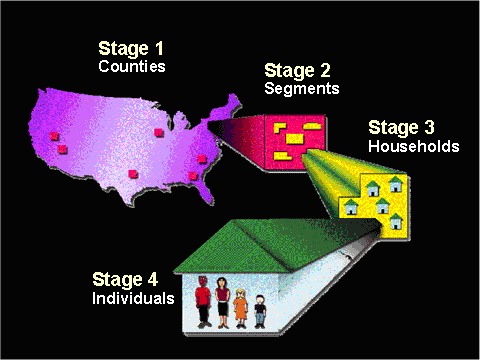
NHANES II data are NOT obtained using a simple random sample. Rather, a complex, multistage, probability sampling design is used to select participants representative of the civilian, non-institutionalized US population. The sample does not include persons residing in nursing homes, members of the armed forces, institutionalized persons, or U.S. nationals living abroad.
The NHANES II sampling procedure consists of 4 stages, shown and described below.

A sample weight is assigned to each sample person. It is a measure of the number of people in the population represented by that sample person in NHANES II, reflecting the unequal probability of selection, nonresponse adjustment, and adjustment to independent population control totals. When unequal selection probability is applied, as in the NHANES II sample, the sample weights are used to produce an unbiased national estimate. More information about sample weights and how they are created can be found in the Weighting module.
NHANES II was designed to sample larger numbers of certain subgroups of particular public health interest. Certain subgroups were oversampled to increase the reliability and precision of estimates of health status indicators for these population subgroups.